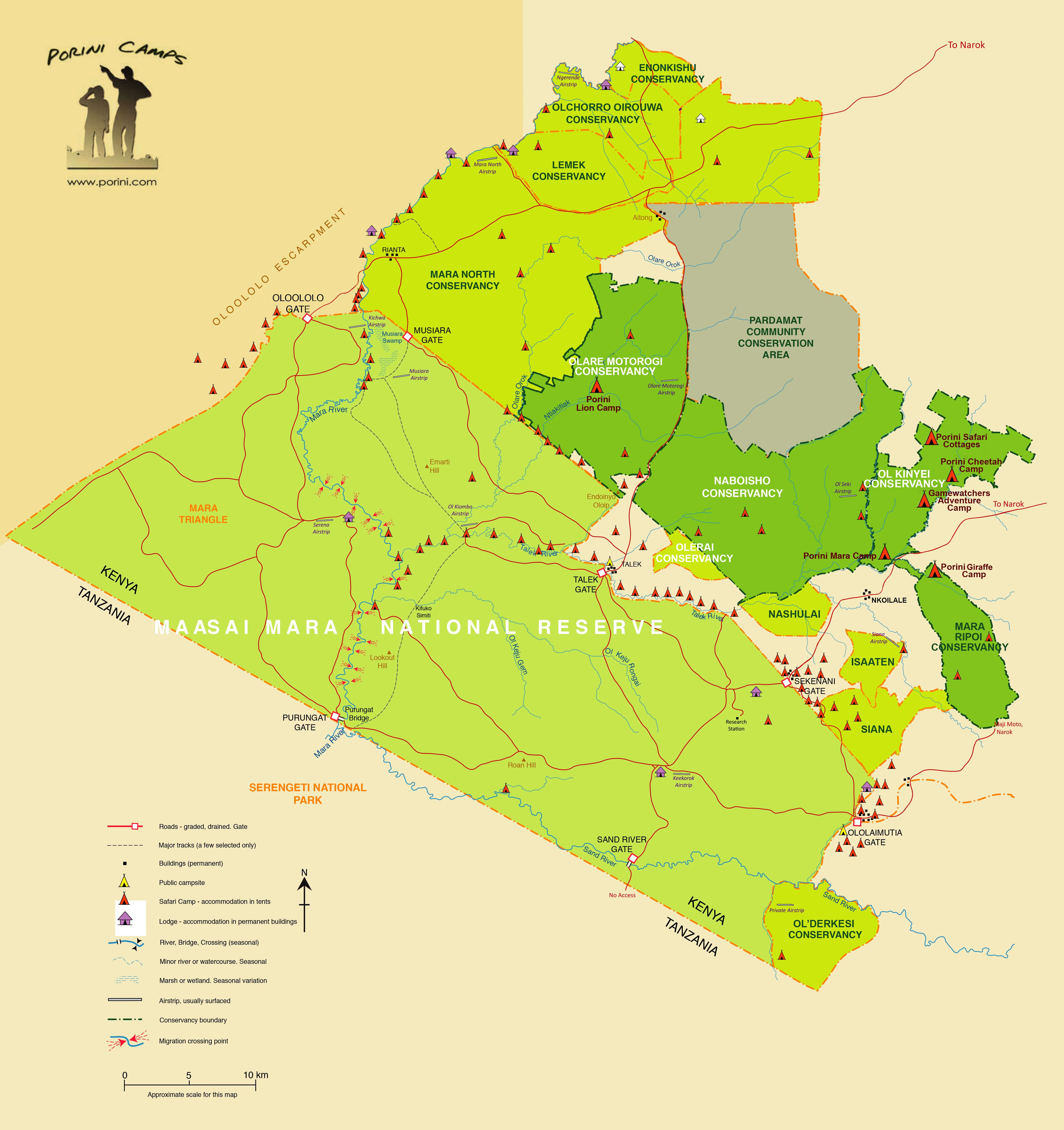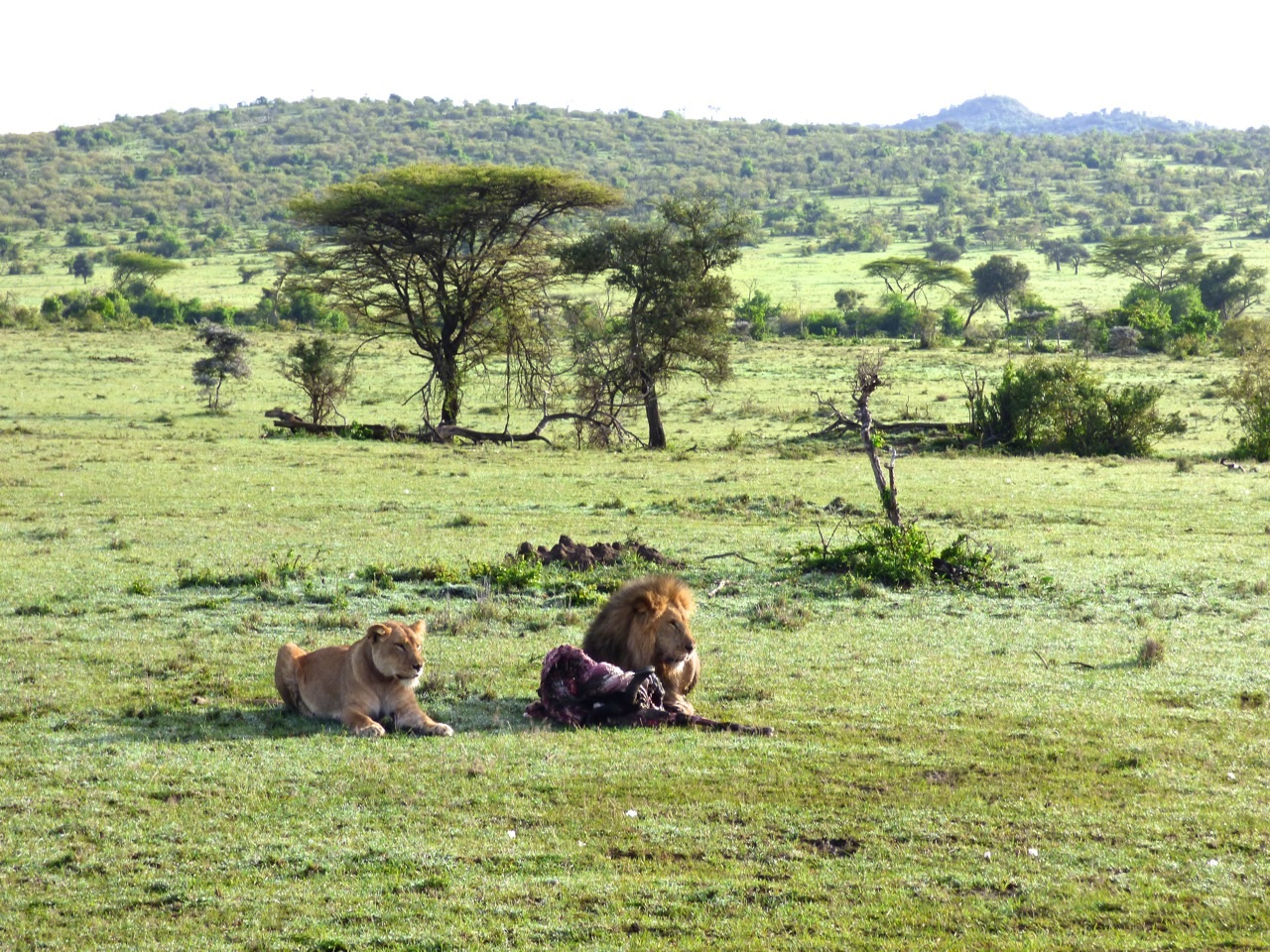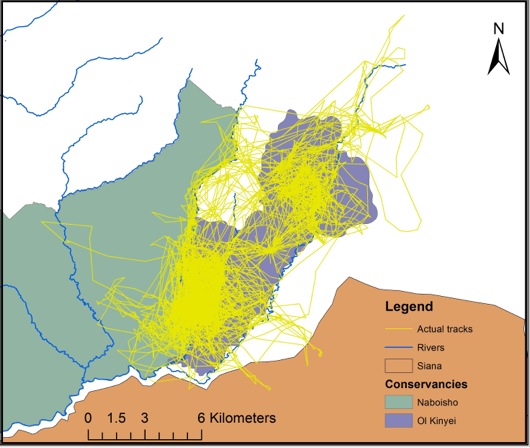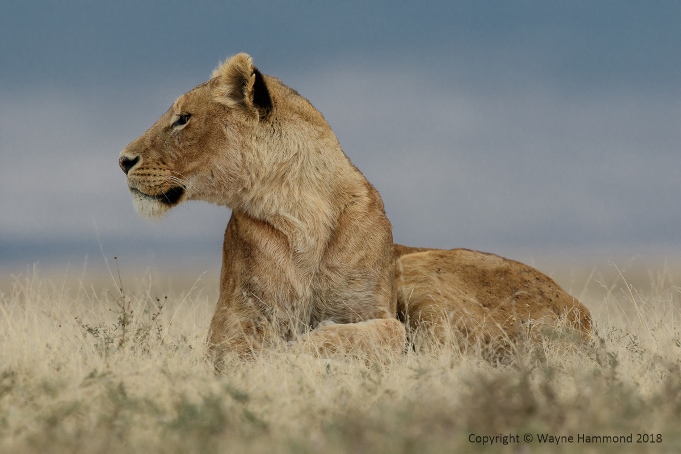
In order to support wildlife conservation in the Maasai Mara, the Mara Lion Project has been closely monitoring lions of the Ol Kinyei pride using a GPS collar to track their movements.
The Ol Kinyei Conservancy comprises over 18,500 acres of protected habitat set aside for wildlife in the Mara eco-system. It was first established in 2005 by Gamewatchers Safaris by combining over 170 separate parcels of land leased from local Maasai families who now earn an income from the rents paid for their individually-owned plots and who also benefit from having family members earning a livelihood working in the Conservancy as rangers and as the staff looking after tourist visitors staying in the small and exclusive Porini Mara Camp. The guests staying at the camp are able to enjoy wildlife viewing in both the Ol Kinyei Conservancy and the adjacent 50,000 acres Naboisho Conservancy.

The latest data published by the Mara Lion Project has demonstrated the importance of the Conservancies in providing a safe haven for wild lions beyond the Reserve.
Research into the movements of the pride was aided by a collar fitted to one of the pride’s females, “Nenkume”, in October 2013 which was programmed to automatically drop off after 2 years. Nenkume’s activity was measured by a sensor in the collar and data was recorded until November 2015 when the collar dropped-off as planned.

Nenkume and one of the male lions (Leshan) from the neighbouring Naboisho pride
Niels Mogensen, Wildlife Biologist and the Chief Project Officer of the Mara Lion Project, has recently shared the results of this data – and his report clearly shows why the protected habitat in conservancies such as Ol Kinyei Conservancy is so important to the future survival of the big cats in the wild.
In Summary (during the 2 year period):
- Nenkume spent 92% of her time inside the Ol Kinyei & Naboisho Conservancies.
- Only on 34 occasions in 2 years did Nenkume spend her daytime resting periods outside the Conservancy boundary.
- Within Ol Kinyei Conservancy Nenkume had 3 “core areas” where she spent 50% of her time. These core areas each kept a distance from the Conservancy boundaries – indicating that she knew where she was safe.
- A clear change in activity / behaviour was evident when Nenkume left the protected area of the Conservancy – she became completely nocturnal, suggesting that she understood the risks of being seen by people outside of the Conservancies

Map showing Nenkume’s actual tracks over a 2 year period – almost entirely within the unfenced boundary of Ol Kinyei Conservancy
This report acknowledges the importance of the Conservancies adjacent to the Maasai Mara National Reserve as areas of protected habitat for wildlife and the fact that they have brought many benefits (including livelihoods from tourism and income from rent payments for the leasing of land) to the local community.
It also highlights the importance of building good relationships with communities surrounding the conservancies since inevitably the predators will occasionally venture onto the community land beyond the Conservancies where the local people live and are rearing livestock.
This is particularly relevant in light of the recent poisoning of some of the well-known lions of the Maasai Mara’s “Marsh Pride” in the Mara Reserve, apparently in retaliation for attacks on Maasai livestock.
Gamewatchers Safaris CEO, Jake Grieves-Cook has commented: “The conservancies have shown how savannah grassland can be conserved and set aside as a safe haven for wildlife and thereby can generate an income and livelihoods for the landowners and now we need a similar initiative to conserve pastureland for the Maasai livestock so that we do not end up with a situation where the only grazing left for cattle is in the areas meant to be for wildlife. There is also a need for changes to the form of livestock husbandry with a greater emphasis on smaller herds but higher quality livestock and use of feedlots and hay as an alternative to nomadic grazing. The challenge is not simply one of preventing encroachment by humans into wildlife habitat but is also about achieving a balance between the needs and aspirations of local people and the sustainable use of natural resources in a way that takes account of the needs of pastoralists and allows conservation of wildlife to succeed.”
Click here to see the full report.
And for more details of Conservancies in the Mara:
on Wednesday 16th December 2015 at 11:32







